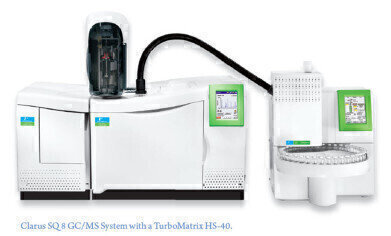GC, MDGC
Monitoring Volatile Organic Compounds in Beer Production Using the Clarus SQ 8 GC/MS and TurboMatrix Headspace Trap Systems
Sep 27 2012
Introduction
Beer is a popular beverage produced by the fermentation of hopped malt extracted from barley and other grains. Although simple in concept, beer is a highly complex mixture of many compounds including sugars, proteins, alcohols, esters, acids, ketones, acids and terpenes. Flavor is an important quality of any beer and the chemical content of the beer is obviously responsible for that flavor. Aroma is an extremely important part of the flavor and so there is a strong interest by brewers in the volatile organic compounds (VOCs) in beer that affect its aroma. Some VOCs have a positive effect on aroma (attributes) and some have a negative effect (defects). The ability to characterize these in beer products before, during and after fermentation would be an important tool in process control, quality assurance and product development. This application note describes a system comprising a headspace trap sampler to extract and concentrate VOCs from a beer sample and deliver them to a gas chromatograph/mass spectrometer (GC/MS) for separation, identification and quantification. The purpose of our experiments is to demonstrate that attributes and defects can all be monitored using one detector and from a single injection with mass spectrometry (MS). The associated benefits include a quicker return on investment, enhanced productivity, more information from a single analysis, and less bench space requirements.
Instrumentation
In this analysis, we utilized a headspace trap system for sample introduction to characterize the flavor of beer. This technique ensures that non-volatile material in beer does not enter the analytical system, which can cause system contamination. The headspace trap extracts the volatile components from a large sample and focuses them onto an inline adsorbent trap. It also facilitates very easy sample preparation – a volume of beer is dispensed into a vial and sealed. The subsequent analysis is then fully automated. A PerkinElmer® TurboMatrix™ Headspace Trap connected to a PerkinElmer Clarus® SQ 8 GC/MS was used for these experiments. Using a headspace trap instead of the classical headspace technique enables up to 100 times improved detection limits over classical headspace methods. A slightly-polar 60 m x 0.25 mm x 1.0 μm Elite 5 (5%phenyl-silicone) column was used. This thick-film column provided sufficient retention to separate the early-eluting most volatile components and provided the dynamic range necessary to chromatograph both high level and low level components in the beer.
Read more about this experiment and see the data about the exciting application…
Authors
Lee Marotta
Sr. Field Application Scientist
Andrew Tipler
Senior Scientist
Digital Edition
Chromatography Today - Buyers' Guide 2022
October 2023
In This Edition Modern & Practical Applications - Accelerating ADC Development with Mass Spectrometry - Implementing High-Resolution Ion Mobility into Peptide Mapping Workflows Chromatogr...
View all digital editions
Events
ACS National Meeting - Fall 2024
Aug 18 2024 Denver, CO, USA
Sep 04 2024 Chiba, Tokyo, Japan
Sep 04 2024 University of Warwick, Coventry, UK
Sep 10 2024 Rockville, MD, USA
Plastics Recycling World Expo Europe
Sep 11 2024 Brussels, Belgium














